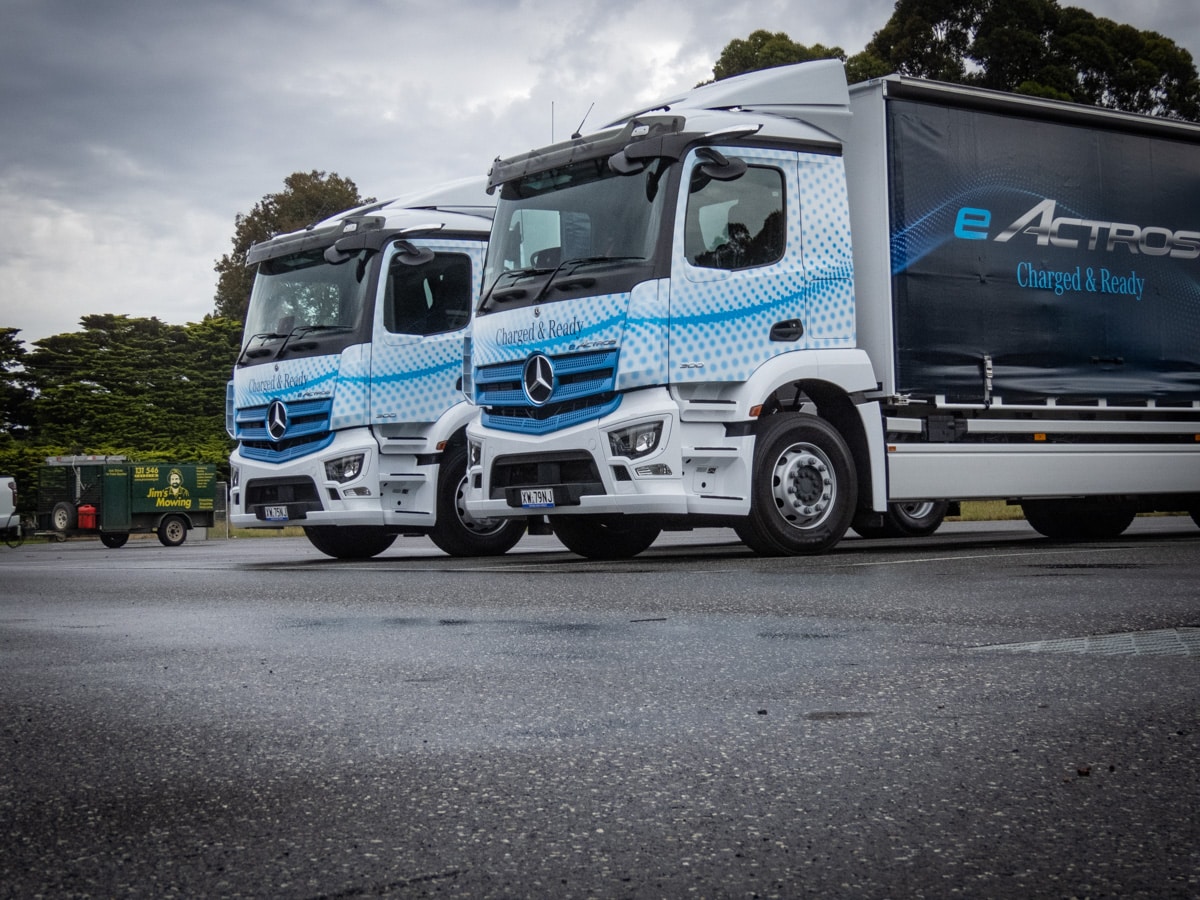The new eActros from Mercedes Benz arrives and gets a PowerTorque test drive as Australia’s first heavy duty truck fitted with an eAxle.
The first generation of the Mercedes-Benz eActros looks like it’s going to be the basis for the design for the next 20 or so years, in the development of the new line of trucks the German truck maker.
After climbing in the cabin, the thing that does give the game away is the fact that when you sit in the driver’s seat drop the key fob into a tray and press the start button, there is very little noise emanating from anywhere, a major departure from the traditional diesel powered truck.
Looking around inside the cabin, it is all very familiar to anybody who is given any of the more recent act Actros models a try. It’s not until you start looking into the detail that the tell signs of this being an electric vehicle, rather than one powered by diesel, come to mind.
Looking at the dash, which is like a large computer tablet mounted directly in front of the driver, there’s speed on the left, while on a the right, a circle. It shows charge, braking and then zero to 100 per cent. Underneath there’s the words ready and boost. There’s also an Auto and Power indicator, showing the driver which mode they are driving in. There can also be an Economy mode to conserve a bit more energy, if required.
Out on the road, this right hand dial becomes a really useful tool for the driver, if they want to drive conservatively, conserving battery power, and avoiding that call to the boss to say the batteries are flat. The dial on the right comes to life, and moves to the right, when the driver engages drive and hits the accelerator.
The amount of power being used, from nought to100 per cent is indicated. The higher the percentage, the faster the acceleration, the more power you are drawing down from the battery.
That calculation is quite obvious, but it is when the driver powers off and slows the vehicle when this dial comes into its own. Taking the foot off the pedal brings it back to zero, no energy being used. To slow, simply apply the brakes gently and the regenerative braking comes, slowing the truck and also charging the battery back up.
The first pushes to the brake pedal simply engage the regen, which ramps up as you push, there are five levels of regeneration available. Push the brake pedal harder and the service bakes are blended in with the retardation to bring the truck to a halt. The left hand side of this dial shows the amount of regen being used and also when the brakes are being applied, giving the driver a clear idea of what’s going on under the bonnet.
There is also a steering column stalk to control the level of retardation, and experienced drivers will probably feel more comfortable using that, as it’s more familiar to those used to a conventional engine brake. However, the brake pedal will also be needed to bring the truck to a halt so, perhaps, just relying on one control rather that two might turn out to be easier. It’s relatively simple to drive with the pedal, especially when keeping an eye on the right hand power dial.
This neat instrumentation should be an antidote to the range anxiety which seems to grip electric truck owners and drivers. The visibility and design of the system, enables the driver to maximise battery life, and thus, reduce the anxiety levels. The display also has a live read out of the expected kilometres left in the batteries, this will vary over time, but proves to be another useful antidote to range anxiety.
To the left of the driver is a second, larger, screen with other information about what’s going on in the trucs, but data that is not needed instantly.
There are tyre pressures, axle masses, an energy flow graphic which looks nice, but it is not clear how useful it would be, plus other data for the driver and maintenance team. Cameras can also be connected, PTOs controlled etc.
There were also two other screens in the cabin for this test drive, and they are the mirror cam screens fitted to the A pillars. The technology exists and is available on most brands, but the level of take up of the concept has been low, so far, even in Europe. Tthese are the latest iteration and are an improvement on the previous ones tested. The jury remains out on this technology, but history tells us the idea will slowly catch on and become more accepted over time.
Over the few hours of this test drive using the mirror cam became familiar, and it wasn’t a chore to use them instead of conventional mirrors. Plus, of course, we were conserving energy by reducing aerodynamic drag from normal mirrors, and, therefore, reducing range anxiety, to a small degree.




